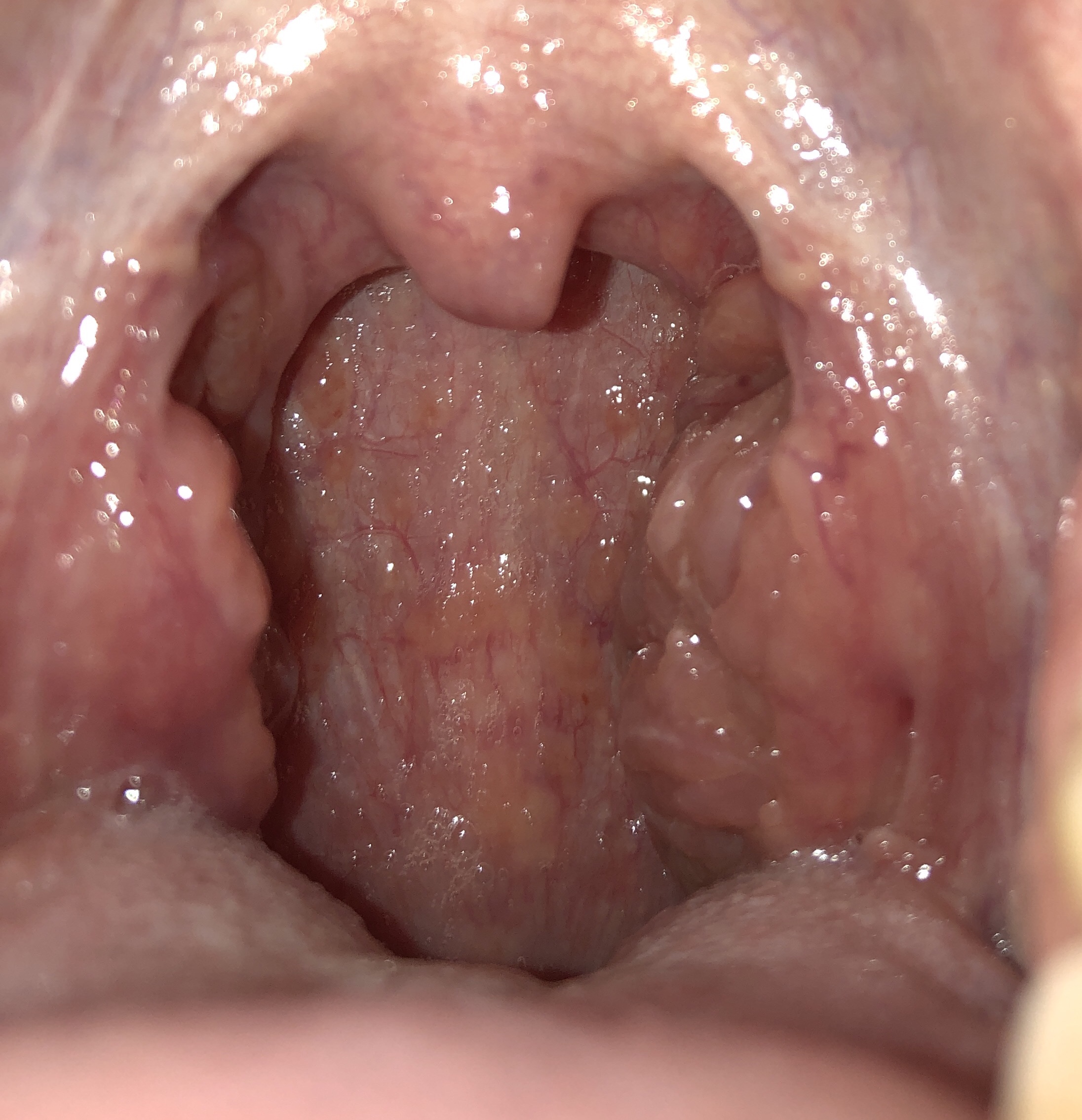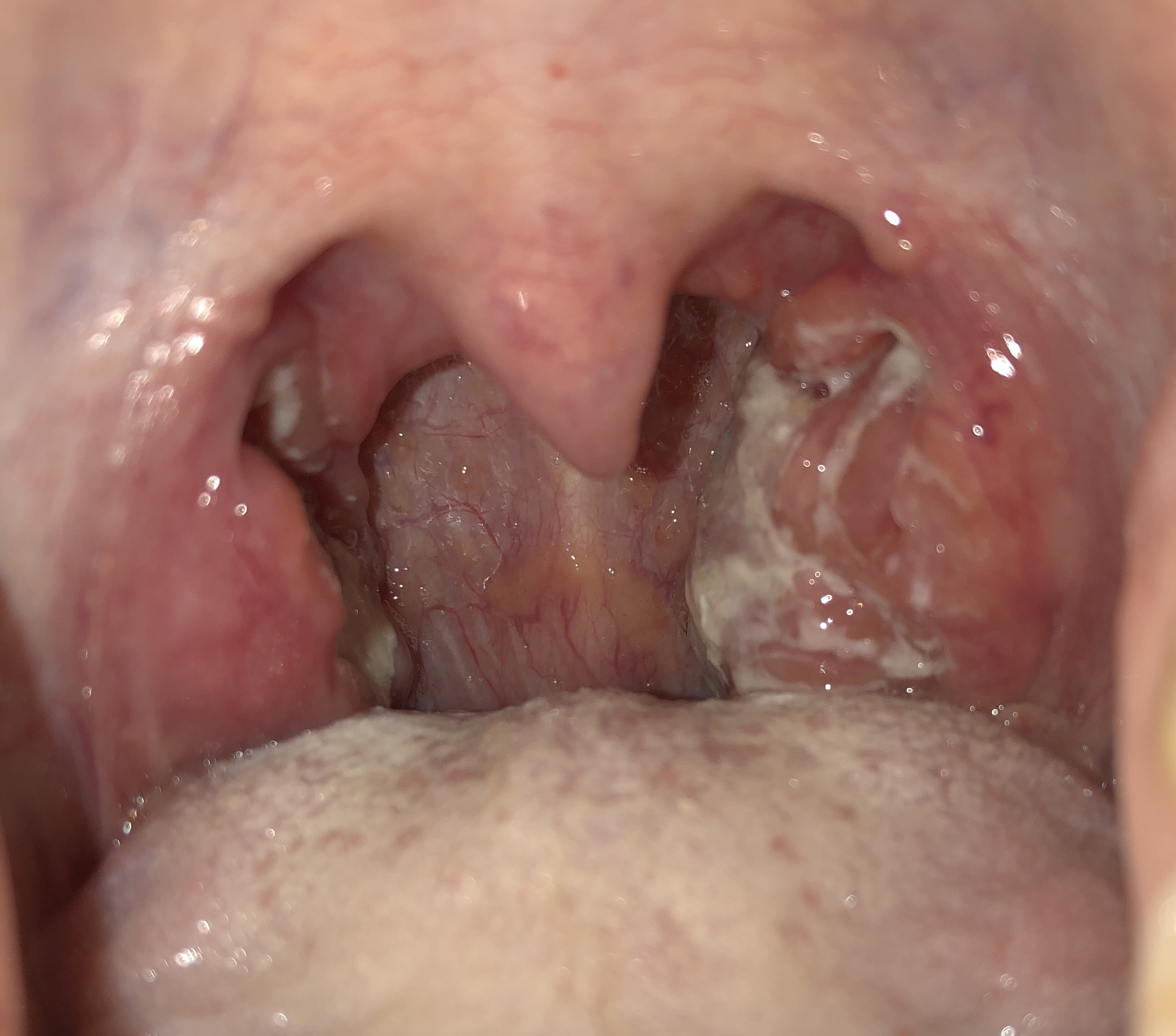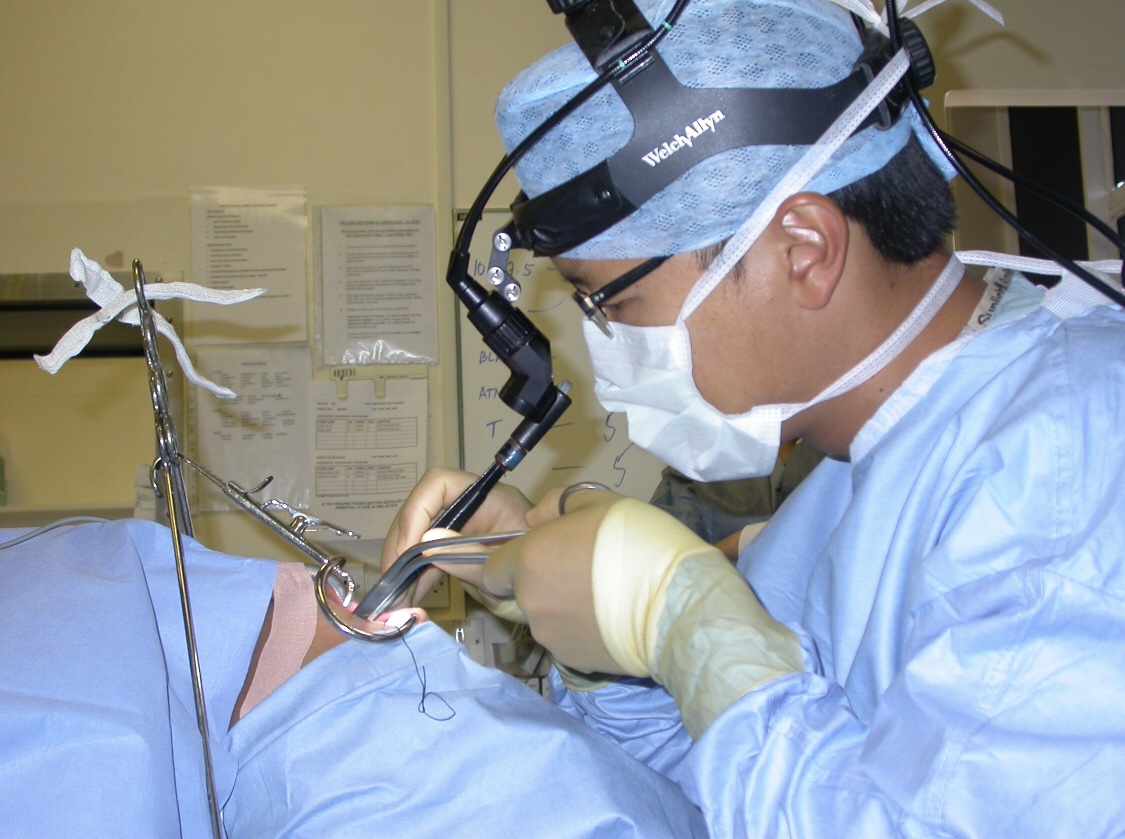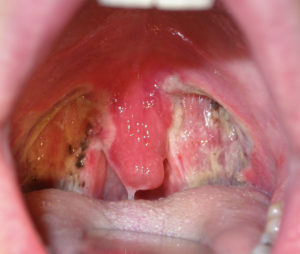Tonsillectomy
The tonsils are small almond-sized glands that sit in the throat. They are made up of lymphoid tissue and form part of Waldeyer’s ring. This is a ring of lymphoid tissue that guards the entrance to the throat. The adenoids form part of this ring too. They have a role in the development of a child’s immune system but become redundant as a child grows.
Tonsils can sometimes become enlarged and diseased. Removal of the tonsils or tonsillectomy may the be necessary.

Tonsillectomy is now a very common procedure with few risks. It has been performed for almost 3000 years. The first descriptions of this common operation appeared in Hindu texts in 1000 B.C.
When is tonsillectomy necessary?
Tonsillectomy is necessary and beneficial in several conditions. The most common is tonsillitis. Tonsillitis is an infection of the tonsils. This is common particularly in childhood and causes a sore throat, fever and inability to swallow. The tonsils often have yellow spots or coating (exudate) when they are infected.

Bacterial tonsillitis. Note the yellow pus or exudate on the tonsils. A swan of the throat grew a bacteria called Klebsiella
Tonsillectomy is advised for those who have recurrent episodes. Research shows that many people will have a few episodes but then never succumb to another infection. They “grow out” of this problem and tonsillectomy would be totally unnecessary. Tonsillectomy is therefore reserved for those who have recurrent infections. There are various guidelines which suggest which patients may benefit from tonsillectomy. One commonly used set of guidelines suggests that patients who suffer five episodes a year in two consecutive years should have a tonsillectomy. Needless to say, the decision to undertake tonsillectomy is never simple. It should be a discussion between the patient and the surgeon. Some patients may wish to observe their condition for a period of time before having a tonsillectomy. Some may have suffered significantly from a few episodes of tonsillitis and wish to have the surgery sooner.
The second condition that is commonly treated with a tonsillectomy is obstructive sleep apnoea or apnea. In this condition, the tonsils are large and obstruct the airway during sleep. This condition is more common in childhood. Parents will report that their children snore at night, sleep restlessly and often choke. Other symptoms of sleep apnea include night terrors and bedwetting.
Tonsillectomy is also advised for patients who suffer two or more episodes of a peritonsillar abscess (or Quinsy), or in patients where there is a suspicion of tonsil cancer.
Removing the tonsils when one tonsil is larger than the other (tonsil asymmetry) is now thought to be unnecessary in the absence of other symptoms (read https://www.entspecialist.sg/doctors-corner/asymmetrical-tonsils-alone-is-not-reason-enough-to-remove-them/ )
How is tonsillectomy performed?
Removal of the tonsils or tonsillectomy takes 30 minutes. The operation is performed under general anaesthesia.
General anaesthesia is induced using gas in children so no needles need to be inserted before the child goes to sleep. However in adults, an intravenous drug is usually administered to induce Anaesthesia as gas induction alone would take too long. A breathing tube (endotracheal tube or ETT) is then inserted into the windpipe and a gag is placed into the mouth the help keep it open during surgery.

The standard set up for tonsillectomy
Tonsil removal is then undertaken by a variety of means. Different surgeons have different preferred means of removing the tonsils. Some may even use a combination of methods and it is best to ask your surgeon which method they prefer (and why!).
In general, surgical methods that employ hot techniques such as diathermy or laser were associated with more pain and more risk of bleeding.
The following are commonly used techniques
- Coblation or Controlled Ablation uses a wand that delivers low energy radiofrequency energy to dissect tissue precisely with minimal collateral heat damage. The video below is an easy to understand illustration of coblation tonsillectomy
- Cold-steel dissection. In this method no heat generating instruments are used. Blood vessels are tied off using sutures
- Electrocautery is the use of electrical current to dissect and seal blood vessels
What can I expect after tonsillectomy?

Appearance of the tonsil bed after surgery. The yellow mucus is slough and not to be confused with an infection
It takes approximately two weeks to fully recover from a tonsillectomy. These are some of the expected consequences and complications followinga tonsillectomy
Pain
Pain after a tonsillectomy is normal. This usually takes a combination of painkillers such as paracetamol (acetaminophen) and ibuprofen to settle. Eating is difficult and normally soft foods for the first day or two is better tolerated. That said, eating solid foods helps with the healing, and one should not stick to liquids alone. The pain of tonsillectomy tends to fluctuate so day 3 and days 6-7 tend to be the worst. After day 10, the pain gradually subsides. It is also normal to have pain in ears following tonsillectomy
Bleeding
Bleeding can occur from the throat following a tonsillectomy. The rate of post-operative bleeding is said to be 3% in children and up to 6% in adults. Bleeding can occur immediately after surgery (in the first 12 hours) or up to 14 days after the surgery. The amount of bleeding can vary from a blood stained sputum to more persistent large volume bleeds with clots. Gargling with ice water helps in minor bleeds. In severe cases, the patient will need to return to the emergency department. In 0.9% of patients, a return to the operating theatre is necessary to stop the bleeding
Taste change
Some patients experience a change is taste after tonsillectomy. This usually resolves over the course of weeks
If you have any further questions about tonsillectomy, do email us at enquiry@entclinic.sg or schedule an appointment to discuss surgery with one of our surgeons.
Share this blog via:
